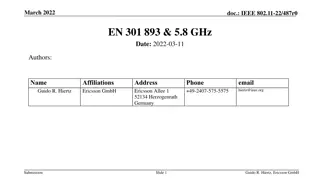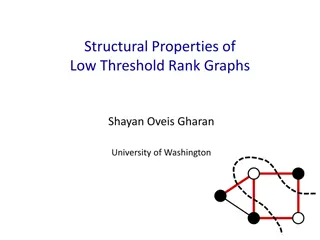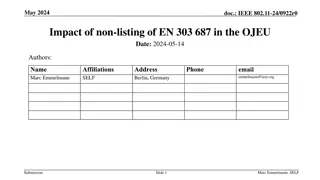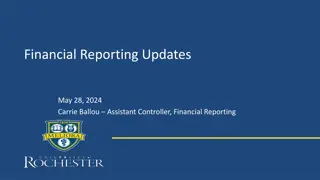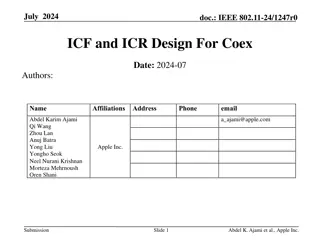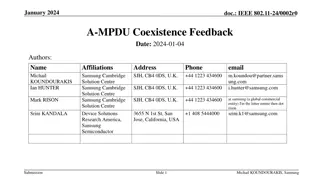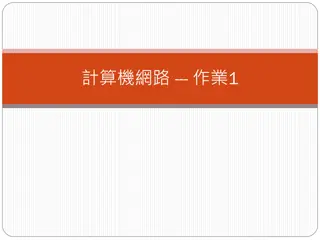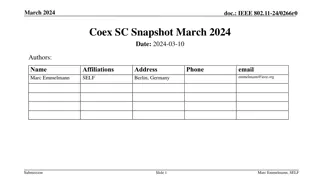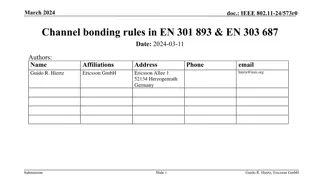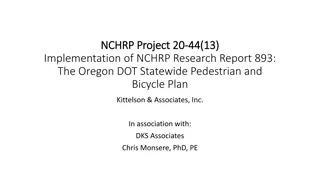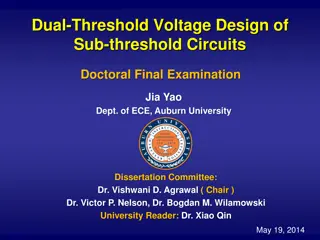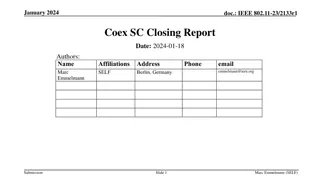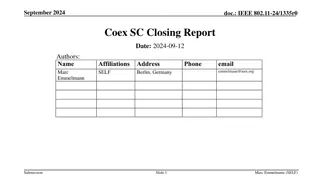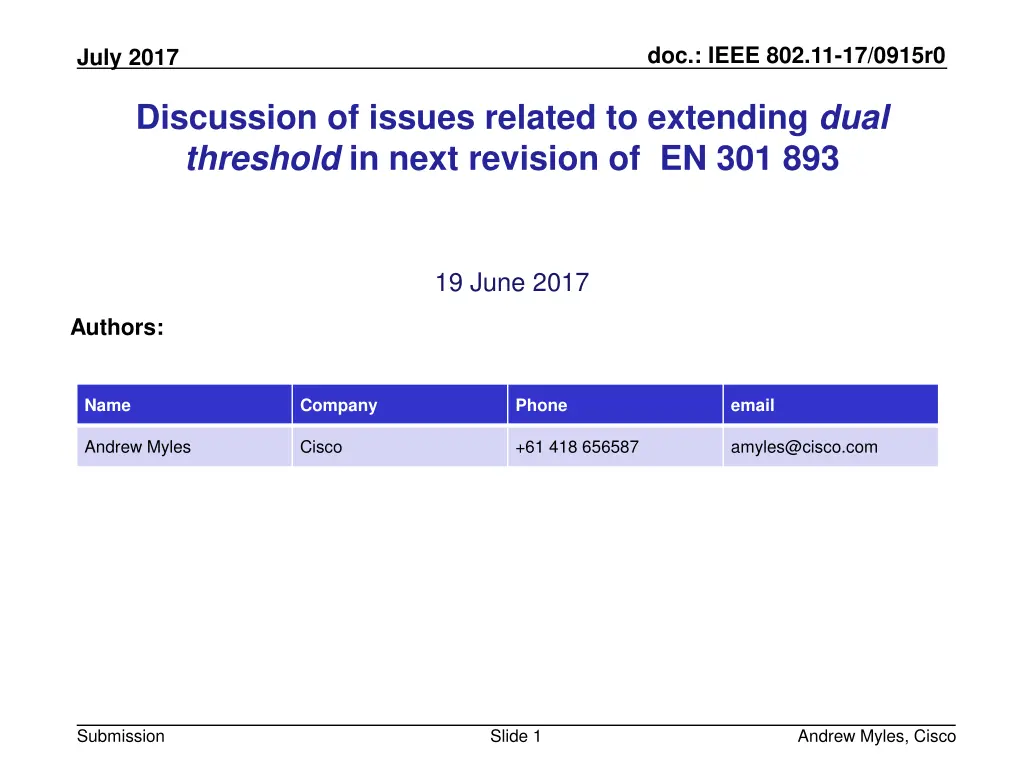
Issues with Extending Dual Threshold in EN 301.893 Revision
"Discussion on extending dual threshold to all access technologies in the next revision of EN 301.893 to minimize risks, ensure fairness, and enhance technology neutrality. Dual threshold reconsideration and major options for IEEE 802.11 equipment highlighted."
Download Presentation

Please find below an Image/Link to download the presentation.
The content on the website is provided AS IS for your information and personal use only. It may not be sold, licensed, or shared on other websites without obtaining consent from the author. If you encounter any issues during the download, it is possible that the publisher has removed the file from their server.
You are allowed to download the files provided on this website for personal or commercial use, subject to the condition that they are used lawfully. All files are the property of their respective owners.
The content on the website is provided AS IS for your information and personal use only. It may not be sold, licensed, or shared on other websites without obtaining consent from the author.
E N D
Presentation Transcript
doc.: IEEE 802.11-17/0915r0 July 2017 Discussion of issues related to extending dual threshold in next revision of EN 301 893 19 June 2017 Authors: Name Company Phone email Andrew Myles Cisco +61 418 656587 amyles@cisco.com Submission Slide 1 Andrew Myles, Cisco
doc.: IEEE 802.11-17/0915r0 July 2017 The next revision of EN 301 893 should extend dual threshold to all access technologies Situation Action Next steps EN 301 893 v2.1.0 allows single threshold and dual threshold choices The next revision of EN 301 893 should extend the use of dual threshold to all access technologies Minimises socio- economic risk of disrupting Wi-Fi Ensures fairness Avoids backward technology step Enhances technology neutrality Include possibility of extending dual threshold to all access technologies in WI for revision of EN 301 893 Dual threshold will be reconsidered in the next revision of EN 301 893 with three major options Remove Maintain Extend Notify IEEE 802.11 WG of this decision and request their technical assistance in developing the text defining the extension Submission Slide 2 Andrew Myles, Cisco
doc.: IEEE 802.11-17/0915r0 July 2017 EN 301 893 v2.1.0 allows single threshold and dual threshold choices EN 301 893 v2.1.0 ensures fair coexistence by requiring systems to use: ED of -72dBm (roughly speaking) OR ED of -62dBm if they also conform with IEEE 802.11-2016 (implying use of PD at -82dBm) This presentation refers to the first and second choices as single threshold and dual threshold respectively Dual threshold was included in EN 301 893 v2.1.0 based on the observation that any effective change of the rules now will put the existing, significant economic and social benefits of Wi-Fi to the European community at risk Submission Slide 3 Andrew Myles, Cisco
doc.: IEEE 802.11-17/0915r0 July 2017 Dual threshold is not available in EN 301 893 v2.1.0 for other than 802.11ac/n/a-only compliant equipment Dual threshold for 11ac/n/a From EN 301 893 v2.1.0 Option 1: For equipment that for its operation in the 5 GHz bands is conforming to IEEE 802.11 ac-2013 [10], clause 22, or to IEEE 802.11 -2012 [9], clause 18 or clause 20, or any combination of these clauses, the Energy Detect Threshold (ED Threshold) is independent of the equipment's maximum transmit power (PH). The Energy Detect Threshold (ED Threshold) shall be: TL = -75 dBm/MHz Dual threshold not applicable for equipment not purely11ac/n/a Option 2: For equipment conforming to one or more of the clauses listed in Option 1, and to at least one other operating mode, and for equipment conforming to none of the clauses listed in Option 1, the Energy Detect Threshold (ED Threshold) shall be proportional to the equipment's maximum transmit power (PH). Assuming a 0 dBi receive antenna the Energy Detect Threshold (ED Threshold) shall be: TL = Min (-75 dBm/MHz, Max (-85 dBm/MHz, -85 dBm/MHz + (23 dBm - PH))) Slide 4 Submission Andrew Myles, Cisco
doc.: IEEE 802.11-17/0915r0 July 2017 Dual threshold will be reconsidered in the next revision of EN 301 893 with three major options It was agreed by the participants of ETSI BRAN that dual threshold for IEEE 802.11 equipment would be reconsidered for the next revision of EN 301 893 Some even assert it was agreed that reconsideration means it would be removed; there is significant disagreement on this point The main options for reconsideration include: 1. Remove dual threshold, meaning all newly sold 802.11 equipment would need to use an ED of -72 dBm The alleged agreement above 2. Maintain dual threshold as is, meaning 802.11ax equipment would need to use an ED of -72 dBm The EN 301 893 status quo 3. Extend dual threshold to cover 802.11ax equipment (and other equipment too) The recommendation from IEEE 802 Liaison Statement Submission Slide 5 Andrew Myles, Cisco
doc.: IEEE 802.11-17/0915r0 July 2017 It is likely that LAA proponents would prefer not to extend dual threshold (option 3) LAA proponents would appear to prefer the option 1, removing the dual threshold option completely One reason, articulated by LAA proponents in previous ETSI BRAN discussions, is an assertion that option 1 better supports technology neutrality Technology neutrality is a goal for all Harmonised Standards, including EN 301 893 However, LAA proponents would also presumably not object to lower 802.11ax performance compared to LAA/MulteFire (& 802.11ac) for competitive reasons Submission Slide 6 Andrew Myles, Cisco
doc.: IEEE 802.11-17/0915r0 July 2017 The next revision of EN 301 893 should extend the use of dual threshold to all access technologies Evaluation of three options Option 1 & option 2 will have an adverse affect on 802.11ax, , making its features unavailable in Europe With subsequent socio-economic risk of disrupting Wi-Fi Option 1 & option 2 cannot be justified based on fairness criteria because option 3 is also fair 3GPP simulations provide the evidence Option 1 & option 2 represent a backward technology step by disallowing status quo Option 3 at least maintains existing the technology position Option 3 is the best way to achieve technology neutrality byallowing dual threshold for all access technologies Option 1 and option 2fail technology neutrality criteria Submission Slide 7 Andrew Myles, Cisco
doc.: IEEE 802.11-17/0915r0 July 2017 Option 1 & option 2 will have an adverse affect on 802.11ax, making its features unavailable in Europe Both option 1 and option 2 would significantly reduce the performance of 802.11ax as clearly demonstrated by simulations submitted to the IEEE 802.11 PDED ad hoc in early 2017 In the case of option 1, the performance reduction would be relative to Any 802.11ac/n/a equipment sold before transition to revised EN 301 893 All LAA, Multefire, etc equipment In the case of option 2, the performance reduction would be relative to All 802.11ac/n/a equipment All LAA, Multefire, etc equipment Europe should be concerned that the wrong choice for the revision of EN 301 893 could cause the additional benefits of 802.11ax to be unavailable to the European community With subsequent socio-economic risk of disrupting the Wi-Fi ecosystem Submission Slide 8 Andrew Myles, Cisco
doc.: IEEE 802.11-17/0915r0 July 2017 Option 1 & option 2 cannot be justified based on fairness criteria because option 3 is also fair Disallowing dual threshold for 802.11ax, as in option 1 or option 2, could theoretically be justified on the basis of fairness Some have argued it is not fair if 802.11ax can use an ED of -62dBm if LAA has to use an ED of -72dBm This analysis ignores the fact that 802.11 also uses a PD of -82dBm The real problem is that LAA and 802.11 use different mechanisms, which is always going to result in unfair sharing However, 3GPP RAN1 have issued multiple LS s to IEEE 802 stating that they are confident there is fairness between LAA and Wi-Fi using ED of -72 dBm for LAA ED of -62 dBM for Wi-Fi (with PD of -82dBm) Assuming 3GPP RAN1 simulations are correct, this means option 1 and option 2 cannot be justified based on fairness once 802.11ax becomes available because fairness is achieved with dual threshold Submission Slide 9 Andrew Myles, Cisco
doc.: IEEE 802.11-17/0915r0 July 2017 Option 1 & option 2 represent a backward technology step by disallowing status quo for all Harmonised Standards are supposed to encapsulate the most up to date technology The use of single threshold instead of dual threshold represents a backward technology step ED-only is a gross measure of nearby systems ED/PD is a more nuanced measure of nearby systems based on information gained from both measured energy and received preambles On this basis, option 1 and option 2 are unacceptable because they limit the use of dual threshold, by 802.11ax at the very lest Aside: it is rumoured that some EC officials are concerned that that ED is a backward technology step compared to PD/ED While this rumour is unsubstantiated, this is exactly what IEEE 802 have been telling 3GPP RAN1 for more than two years! Submission Slide 10 Andrew Myles, Cisco
doc.: IEEE 802.11-17/0915r0 July 2017 Option 3 is the best way to achieve technology neutrality byallowing dual threshold for all Summary The concept of technology neutrality is a key principle of the European regulatory framework Depending on the context, technology neutrality can have three different meanings A reference to 802.11 (as in option 1 & option 2) is incorrectly cited as not technology neutral EN 301 893 will be more technology neutral under all three meanings when dual threshold is available to all technologies (option 3) Submission Slide 11 Andrew Myles, Cisco
doc.: IEEE 802.11-17/0915r0 July 2017 The concept of technology neutrality is a key principle of the European regulatory framework Hogan Lovells Global Media and Communications Quarterly 2014 Technology neutrality is one of the key principles of the European regulatory framework for electronic communications The principle was first introduced in 2002, and reinforced in the 2009 with the revised EU telecoms legislation Since the 2009 revisions, all spectrum licenses in Europe are supposed to be technology neutral Since 2011, technology neutrality has also been recognized as a key principle for Internet policy The concept now appears in the proposed EU Data Protection Regulation, and the proposed EU Directive on Network and Information Security (the so-called NIS Directive), both of which will likely be adopted in 2015 Submission Slide 12 Andrew Myles, Cisco
doc.: IEEE 802.11-17/0915r0 July 2017 Depending on the context, technology neutrality can have three different meanings Meaning 1 Meaning 2 Meaning 3 Technology neutrality means that technical standards designed to limit negative externalities (eg. radio interference, pollution, safety) should describe the result to be achieved, but should leave companies free to adopt whatever technology is most appropriate to achieve the result. Technology neutrality means that the same regulatory principles should apply regardless of the technology used. Technology neutrality means that regulators should refrain from using regulations as a means to push the market toward a particular structure that the regulators consider optimal. Regulations should not be drafted in technological silos. In a highly dynamic market, regulators should not try to pick technological winners. Source: Hogan Lovells Global Media and Communications Quarterly 2014 Submission Slide 13 Andrew Myles, Cisco
doc.: IEEE 802.11-17/0915r0 July 2017 A reference to 802.11 (as in option 1 & option 2) is incorrectly cited as not technology neutral Noting the importance of technology neutrality in Europe, it is important to evaluate the options of the next revision of EN 301 893 with this filter A lack of technology neutrality is often cited as a reason to drop the dual threshold option in EN 301 893 for 802.11ac/n/a and not extend it to 802.11ax (option 1) The explicit reference to an external IEEE 802.11 standard (using the ED and PD mechanism) is often cited as the issue In contrast, the ED-only mechanism in EN 301 893 is defined without reference to an external standard It is worth noting that nothing in the any of the three meanings of technology neutrality suggest that an external standard cannot be referenced Submission Slide 14 Andrew Myles, Cisco
doc.: IEEE 802.11-17/0915r0 July 2017 EN 301 893 will be more technology neutral under all three meanings when dual threshold is available to all The question of the technology neutrality of EN 301 803 using each of the three options must be evaluated by consideration of all three meanings Such a consideration suggests that EN 301 893 is more technology neutral when dual threshold is included for all access technologies (option 3) by: Providing the same choices for all access technologies (meaning 1) Enabling fair access for all access technologies (meaning 2) Not picking winners (meaning 3) Submission Slide 15 Andrew Myles, Cisco
doc.: IEEE 802.11-17/0915r0 July 2017 Option 3 is more technology neutral by providing the same choices for all access technologies (meaning 1) The current version of EN 301 893 does not satisfy the meaning 1 definition of technology neutrality because it defines two mechanisms for achieving fair access rather than describing fair access Meaning 1 Technology neutrality means that technical standards designed to limit negative externalities (eg. radio interference, pollution, safety) should describe the result to be achieved, but should leave companies free to adopt whatever technology is most appropriate to achieve the result This non-technology neutral approach is justified because it has proven to be very difficult to define fair access directly Option 1 is worse under meaning 1 because it forces companies to adopt single threshold, and thus they are even less able to adopt whatever technology is most appropriate to achieve the result Submission Slide 16 Andrew Myles, Cisco
doc.: IEEE 802.11-17/0915r0 July 2017 Option 3 is more technology neutral by providing the same choices for all access technologies (meaning 1) Meaning 1 Option 2 is better under meaning 1 because it allows greater choice between the alternative to achieve the desired result, between the ED-only mechanism for all equipment the PD/ED mechanism for 802.11a/n/ac equipment Technology neutrality means that technical standards designed to limit negative externalities (eg. radio interference, pollution, safety) should describe the result to be achieved, but should leave companies free to adopt whatever technology is most appropriate to achieve the result Option 3 is even better under meaning 1 because it allows companies to adopt whatever technology is most appropriate (from the restricted set), regardless of the access technology used Single threshold or dual threshold can be used by equipment based on any access technology Submission Slide 17 Andrew Myles, Cisco
doc.: IEEE 802.11-17/0915r0 July 2017 Option 3 is more technology neutral by enabling fair access for all access technologies (meaning 2) Fair access is the regulatory principle that probably applies in the context of EN 301 893 Meaning 2 Technology neutrality means that the same regulatory principles should apply regardless of the technology used Meaning 2 thus implies that fair access should be available to all access technologies Option 1 satisfies meaning 2 on one level in that fair access could result from the use of single threshold by all acces technologies; however, it fails meaning 2 by forcing the use of single threshold , thus imposing a technological silo The technological silo is that single threshold is a very basic technology, whereas the more sophisticated dual threshold, as widely used by Wi-Fi, would be effectively disallowed Regulations should not be drafted in technological silos Submission Slide 18 Andrew Myles, Cisco
doc.: IEEE 802.11-17/0915r0 July 2017 Option 3 is more technology neutral by enabling fair access for all access technologies (meaning 2) Meaning 2 Option 2 does not satisfy meaning 2 because it results in 802.11ax not being able to achieve fair access if it uses dual threshold with an ED of -72dBm Or forces 802.11ax to use the less sophisticated single threshold Technology neutrality means that the same regulatory principles should apply regardless of the technology used Regulations should not be drafted in technological silos Option 3 is the best under meaning 2 because it provides fair access for all technologies and limits any technological silos by making both single threshold and dual threshold available to all technologies Submission Slide 19 Andrew Myles, Cisco
doc.: IEEE 802.11-17/0915r0 July 2017 Option 3 is more technology neutral by not picking winners (meaning 3) Both the LAA and Wi-Fi mechanisms are considered optimal by different stakeholders It is not yet agreed which is actually optimal Meaning 3 Technology neutrality means that regulators should refrain from using regulations as a means to push the market toward a particular structure that the regulators consider optimal. Option 1 and Option 2 do not satisfy meaning 3 because they pick single threshold as technological winner They do not allow 802.11ax to use dual threshold Option 3 better satisfies meaning 3 by not restricting the use of either single threshold or dual threshold Arguably option 3 picks two winners but this is probably justified in the interest of fair access by all; the number of mechanisms should be increased over time as the stakeholders become confident that fair access can be achieved In a highly dynamic market, regulators should not try to pick technological winners. Submission Slide 20 Andrew Myles, Cisco
doc.: IEEE 802.11-17/0915r0 July 2017 ETSI BRAN should include extension option in WI for revision of EN 301 893 and notify IEEE 802.11 WG The inclusion of an extension of dual threshold in the next revision of EN 301 893 needs to be enabled by including such a possibility in the scope of the relevant WI This is an action for ETSI BRAN The extension of dual threshold requires referencing the IEEE 802.11 standard in such a way that the dual threshold mechanism can be applied to any technology Ultimately this is the responsibility of ETSI BRAN However, noting IEEE 802.11 WG has expressed an interest in this topic, ETSI BRAN should call on IEEE 802.11 WG for assistance The challenge is to define the extension in a way that allows 802.11 technology to be used by all access technologies An additional challenge is to define the extension so that new 802.11ax features such as spatial reuse are not prevented, thus allowing innovation without causing harm to fair sharing Submission Slide 21 Andrew Myles, Cisco



